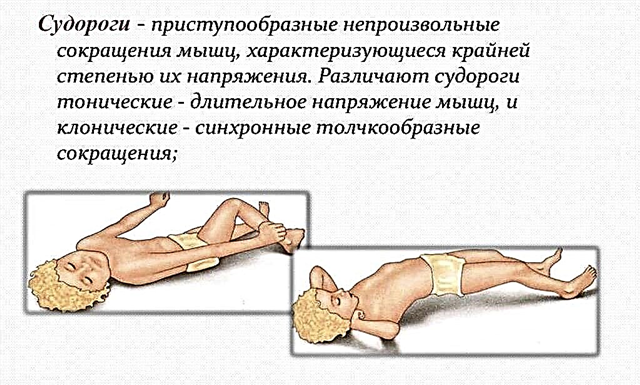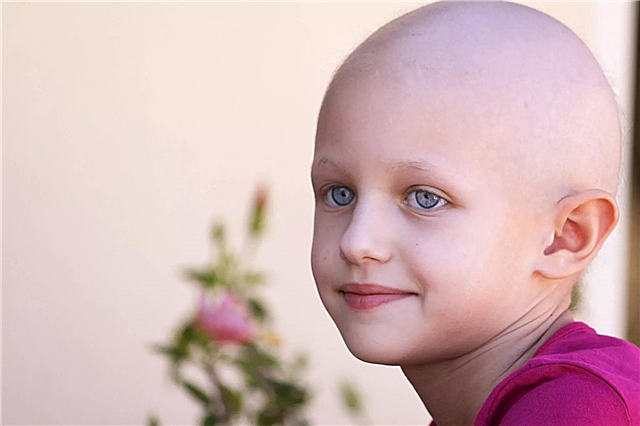The newborn is completely helpless, completely dependent on the parents. All his systems are imperfect, including the visual one. How the baby sees right after birth, and how his vision changes by the year, this article will tell.

Newborn baby
Features of the visual apparatus of newborns
There are many myths around the neonatal period. For example, for a long time people believed that the world of a just-born baby would be turned upside down. Since it is impossible to find out from the child himself what he feels, he feels, parents and doctors tried to find an explanation for the baby's vision imperfection on their own.
Of course, a newborn is obviously different from an adult. This is because, when fully matured to the required date inside the mother's womb, after birth, it turns out to be unadapted to the outside world. The children's muscular frame cannot hold the body on weight, motor skills do not allow interaction with objects around, the tongue does not have plasticity for speaking. The vision of a newborn does not allow to see anything.
As a baby sees
Crumbs' vision up to a year is imperfect. Before birth, he did not need it, therefore it did not develop. Now the newborn is just learning to use it, closer to the year the child masters the whole skill. It is not clear to an adult how one can not be able to see, but this is only because he has long ago developed this habit. The little one needs to learn to focus his gaze on the objects of interest, to process the flow of information coming through the visual channel. This is a long and difficult process.
Vision in the first days of life
Contrary to the well-known myth about inversion, a small child sees everything directly, only close and without colors. The vision of just a born baby allows you to see the world around for the first time gray and blurry. The baby still does not know how to focus his gaze and does not distinguish between colors (for him everything is black and white so far). The world beyond 20 centimeters from his eyes does not exist at all - the baby does not see him in the first days of life.
This changes with age. So, the vision of a child at 1 month allows you to see the mouth and eyes on the face of the mother, bent over the baby. At two months, the range of vision increases to a couple of meters. Gradually, colors appear, the ability to concentrate on a specific subject develops.

Newborn baby looks at a toy
When the child's eyes are focused
Parents are interested in when newborn gaze focuses. You should not wait for this immediately after childbirth. Everything develops gradually:
- The child will make the first attempts to strain his vision by about the first month of his life, but only on an object or person at a distance of 20-30 centimeters from his eyes. It is then that the baby begins to distinguish between eyes and mouth, the largest parts of the parent's faces, more often than others bent over the baby.
- By the age of two to three months, the focusing range increases to a couple of meters. Now the baby can see the rattle lying a step away from him.
- By four months, the baby will notice even more distant or small details: he will be interested in a picture on the wall or a view from a window.
- In the period from 7 months to a year, the infant learns to focus the gaze in the same way as an adult, if there are no disorders in the development of the visual system.
Interesting. When a newborn baby's eyesight is focused, he looks at what he sees for a long time and carefully. So the little one gets to know the world, learns to process a new stream of information. Later, when his motor skills allow him to touch, grab the desired object, he will not only examine it, but also feel, twist, lick, and gnaw.

Newborn examines a toy
How vision develops
The stages of development of vision in a newborn can be divided by month. It develops constantly, like all body systems. This means that some new skills and achievements are constantly appearing.
Vision development chart
All norms are quite conditional - it is impossible to calculate such an important point as the individuality of each child. How the baby's ability to see develops on average is shown in the table below.
Vision development rates in newborns by month
| Newborn | Vision is characterized by blurry, indistinct, black and white colors. |
|---|---|
| 1 month | The world is getting clearer. The baby begins to distinguish large details of objects at a distance of 20-30 centimeters. The colors are still missing. |
| 2 months | Focusing develops. The vision is still black and white. The kid can try to concentrate on an object a couple of meters from him, he still does not see clearly. The ability to follow an object slowly moving left and right appears. |
| 3 months | The clarity of the picture is improved. Colors begin to differ, primarily red. Attempts appear to coordinate their movements with what they see (for example, the desire to grab the rattle at which the child is looking). |
| 4 months | Objects in the distance become more and more clear. Other paints begin to appear, color perception improves. |
| 5 months | An important milestone is the development of the perception of the depth of space. That is, now the baby will try to follow not only objects moving from side to side, but also those that move from him and to him. The clarity of vision is also improved along with mindfulness. The baby can also see small details. |
| 6 months | By six months, color perception is almost formed. The baby can distinguish all colors and even many of their shades. You can start getting to know them, as many teachers suggest. |
| 7 months | The vision of a seven-month-old baby is already almost completely formed. He knows how to see objects in the distance, notes the difference in all colors, and knows how to process information coming from the visual channel. |
| 8 months | Analytical skills are improved. People for the child are beginning to be divided into known and unknown. The kid carefully examines the face of an adult. Realizing that there is a stranger in front of him, the baby can burst into tears. When he sees his parents, he will express joy. |
| 9-10 months | The clarity becomes higher, more and more shades are distinguished. |
| 11 months | Around this age, there is an interest in observing the constant changes in colors and shapes. Therefore, many children begin to enthusiastically follow what is happening on the TV screen, tablet, phone. |
| 12 months | The development of the baby's vision is almost complete. |

An example of how children of different ages see the same toy
Baby vision test
Since the baby is just developing, it is important already at this stage to monitor the correctness of the formation of all body systems. If there is any pathology, it will be much easier to fix the problem now than when vision has already been formed. That is why infants are assigned planned visits to an ophthalmologist.
Important! Vision in newborns is checked only by pediatric specialists. An adult ophthalmologist will not be able to fully assess the correctness of the development of the baby's visual apparatus. The specificity of the work of a pediatric ophthalmologist is that the organ of vision of infants is in a stage of non-stop development.
The very first examination of the eyes of a small patient is carried out in the hospital. The neonatologist checks the absence of hemorrhages, the integrity of the retina. This is especially important for children born prematurely. At the first appointment with the district pediatrician, a schedule for further visits to the ophthalmologist is determined. He is appointed on the following dates:
- 1 month. This technique is assigned not to everyone, but only to those children who have indications for it: developmental pathologies, prematurity, birth trauma, as well as close relatives with serious vision problems.
- 3 months. Scheduled admission for all babies. A skiascopy is performed, the fundus looks. The doctor will check the child's eyes visually and also interview the parents.
- 6 months. All the same procedures are carried out as in three months.
- Year. The research methods are the same.
After a year, scheduled visits to the ophthalmologist are reduced to once a year. If necessary, the number of receptions can be increased.

Skiascopy for a newborn
In an adult, vision is checked using special tables and devices. In the case of infants, these methods are not possible. Then the vision test is carried out as follows:
- Visual inspection. Allows you to track the correctness of the formation of eyeballs, the absence of redness, inflammation.
- Testing the ability to fix the gaze on static and movable objects. It is used no earlier than from three months of the child.
- A skiascopy is performed, that is, visual acuity is determined. A ray of light is directed into the baby's eyes, which is passed through the lenses (the doctor brings them to the baby's face). The goal of the ophthalmologist is to track the movement of the shadow in the pupil and select the lens at which the shadow disappears. For a newborn, the normal indicator is up to 0.03, for a one-year-old it is already 0.3-0.6.
- Ophthalmoscopy - an assessment of the fundus. The doctor will examine the baby's eyes with a special device. At the same time, the transparency of the lens is assessed.

Ophthalmoscopy baby
Possible developmental disorders, their causes
The vision of a newborn can develop with pathologies. They can appear for one of three reasons:
- Heredity. A child is at risk if his parents or grandparents have eye problems (anamnesis is collected according to the description of the parents at the first visit to the pediatrician). Possible diseases - glaucoma, cataracts, color blindness, corneal opacity, etc.
- Congenital. May appear during fetal development due to a negative effect on the fetus (viral or chronic diseases of the mother, poisoning, etc.).
- Purchased. They appear after childbirth due to external reasons: trauma, poor nutrition, poor hygiene, infectious and viral diseases, etc. This also includes problems due to prematurity.
Any of the above problems can be found both immediately after birth, and appear for some time after it. In babies at risk for genetics or prematurity, this is why routine appointments with an ophthalmologist are prescribed more often. If, within a year from birth, vision is normal, the risk of pathologies in this case decreases, but does not completely disappear.
Prevention of the correct development of the visual apparatus
In order for the baby's vision to develop correctly, this should be taken care of even before the ophthalmologist detects pathology. The famous pediatrician Yevgeny Komarovsky recommends doing this:
- Provide adequate lighting in the child's room when the child is awake. Otherwise, he will learn to determine colors later, it will be worse to distinguish shades.
- Toys must be large and contrasting. Delicate shades, so beloved by mothers, develop the baby's color perception worse. In the first half of the year, Evgeny Olegovich recommends paying more attention to green and yellow shades, but other colors should also be present in the crumbs' everyday life.
- A popular toy - a mobile - should not be hung directly above the baby's head, but slightly to the side. For the first three months, the baby will not consider any objects at a distance of 40 cm above the face anyway. Such a close location can provoke the development of strabismus.

Mobile correctly positioned on the crib
Other pediatricians and ophthalmologists supplement Komarovsky's list with the following recommendations:
- For the first two months of life, it is better to use black and white toys. When a newborn's eyesight is focused for the first time, it is best that the objects around them are as contrasting as possible.
- Avoid bright light directed at the baby's face (except for an appointment with an ophthalmologist). This is unpleasant and puts strain on the child's eyes. If we are talking about walking in the summer, in the middle of the day, it is better to raise the hood of the stroller so that the shadow falls on the face. In case of indirect sunlight (for example, in the evening), this can be omitted.
- Engage with a newborn. It is recommended that the mother bend over him more often, talk, letting the baby examine her face. Dad should do the same. As the child grows up, simple rattle games are connected. Glowing toys can be given by three to four months.
- On the street, during periods of wakefulness from three months, you can pick up the baby, approach, for example, the trees, give them a look.
The best prevention of the correct development of vision in a newborn is the attention of parents to their child, as well as compliance with all medical recommendations. In this case, the chance of a serious pathology in the baby is significantly reduced.



